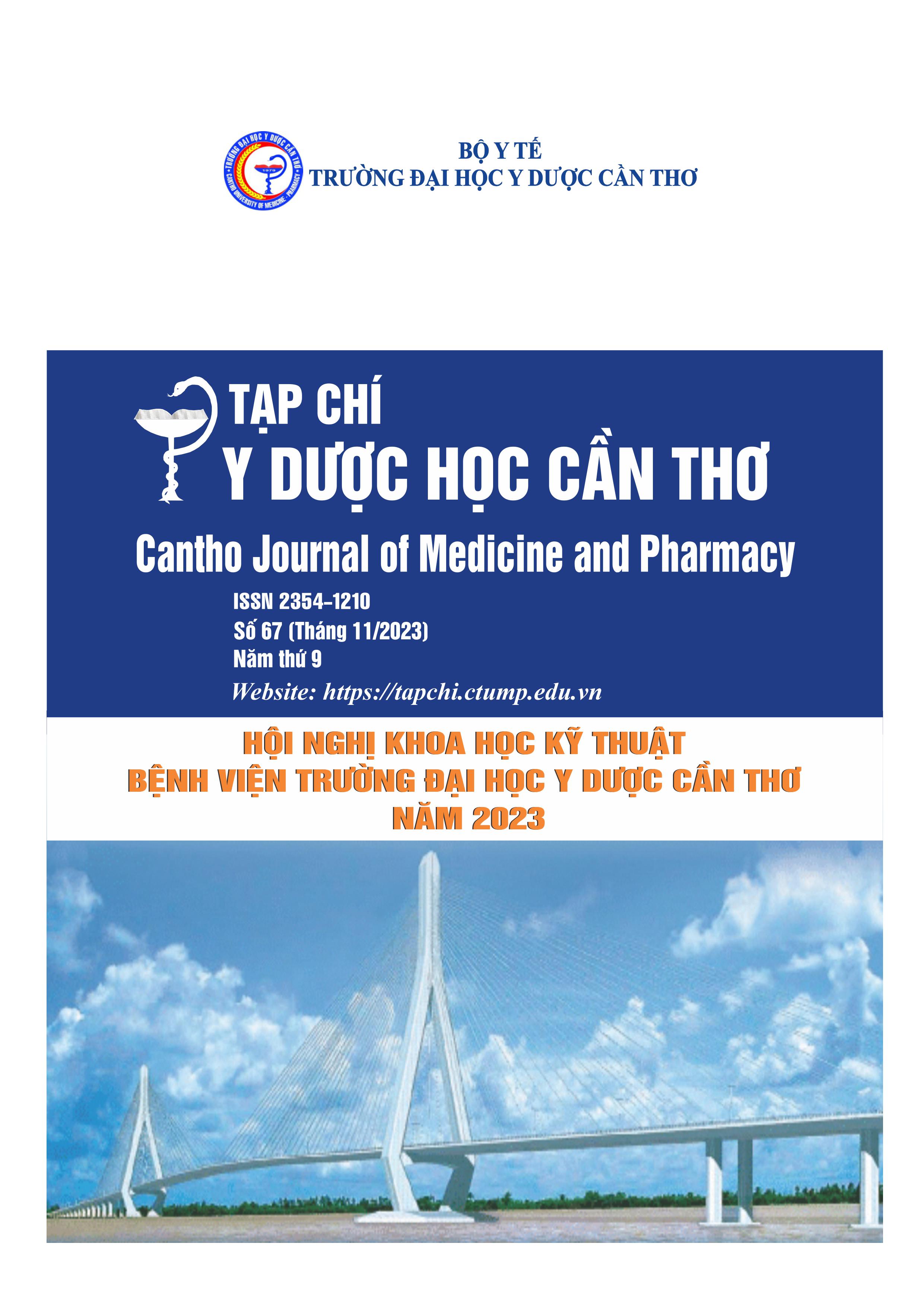BÉO PHÌ TRONG THAI KỲ: THỰC TRẠNG VÀ GIẢI PHÁP
Nội dung chính của bài viết
Tóm tắt
Béo phì là vấn đề sức khỏe thường gặp ở phụ nữ trong độ tuổi sinh sản. Tình trạng này thường bị bỏ sót hoặc phớt lờ do thiếu hụt các phương pháp điều trị cụ thể. Không chỉ gây nguy cơ đáng kể cho phụ nữ trong thai kỳ và sau khi sinh, béo phì còn có tác động kéo dài đến sức khỏe và cần được nhận thức và điều trị kịp thời. Béo phì của mẹ có thể ảnh hưởng tiêu cực đến kết quả của thai nhi, trẻ sơ sinh và trẻ nhỏ, với những hậu quả cả đời cho con cái. Có các phương pháp dựa trên bằng chứng khoa học để quản lý béo phì của mẹ bằng dinh dưỡng, hành vi và phẫu thuật. Lý tưởng nhất là các phương pháp quản lý này nên được áp dụng trước khi mang thai và tiếp tục sau khi sinh, là một phần của chăm sóc dài hạn, nhằm đảm bảo kết quả tốt nhất cho mẹ và thai nhi và phòng ngừa các biến chứng nghiêm trọng. Đánh giá này cung cấp tổng quan về các điều kiện và yếu tố liên quan đến béo phì trong thai kỳ, cũng như các yếu tố quản lý chính cho những người béo phì đang mang thai hoặc đã sinh con. Quản lý béo phì đòi hỏi các chiến lược kéo dài từ các chương trình y tế công cộng đến các can thiệp cá nhân về dinh dưỡng, hành vi hoặc phẫu thuật. Do đó, hiểu biết về quản lý béo phì trong thai kỳ là vô cùng quan trọng, và quá trình quản lý nên bắt đầu từ trước khi mang thai và tiếp tục trong giai đoạn sau sinh. Trong quá trình chăm sóc phụ nữ béo phì trong thai kỳ, bác sĩ sản phụ khoa và các chuyên gia chăm sóc sản phụ sẽ đảm nhận vai trò chính, nhưng cũng cần đến sự hỗ trợ từ các chuyên gia dinh dưỡng và các chuyên gia y tế khác tùy thuộc vào tình hình cụ thể.
Chi tiết bài viết
Từ khóa
Béo phì, thai kỳ, phụ nữ
Tài liệu tham khảo
2. Centers for Disease Control and Pre- vention. CDC WONDER. About natality, 2016–2020 expanded (http://wonder.cdc .gov/natality-expanded-current.html).
3. Vats H, Saxena R, Sachdeva MP, Walia GK, Gupta V. Impact of maternal pre- pregnancy body mass index on maternal, fetal and neonatal adverse outcomes in the worldwide populations: a systematic review and meta-analysis. Obes Res Clin Pract, 2021;15:536-45, doi: 10.1016/j.orcp.2021.10.005.
4. Dachew BA, Ayano G, Betts K, Alati R. The impact of pre-pregnancy BMI on maternal depressive and anxiety symp- toms during pregnancy and the postpar- tum period: a systematic review and meta-analysis. J Affect Disord, 2021;281: 321-30, doi: 10.1016/j.jad.2020.12.010.
5. Brewer CJ, Balen AH. The adverse ef- fects of obesity on conception and im- plantation. Reproduction, 2010;140:347-64, doi: 10.1530/REP-09-0568.
6. Wise LA, Rothman KJ, Mikkelsen EM, Sørensen HT, Riis A, Hatch EE. An internet-based prospective study of body size and time-to-pregnancy. Hum Reprod, 2010; 25:253-64, doi:
10.1093/humrep/dep360.
7. Silvestris E, de Pergola G, Rosania R, Loverro G. Obesity as disruptor of the female fertility. Reprod Biol Endocrinol, 2018;16:22, doi: 10.1186/s12958-018-0336-z.
8. Rittenberg V, Seshadri S, Sunkara SK, Sobaleva S, Oteng-Ntim E, El-Toukhy T. Effect of body mass index on IVF treat- ment outcome: an updated systematic re- view and meta-analysis.
Reprod Biomed Online, 2011;23(4):421-39, doi: 10.1016/j.rbmo.2011.06.018.
9. Practice Committee of the American Society for Reproductive Medicine. Obesity and reproduction: a committee opinion. Fertil Steril, 2015;104:1116-26.
10. Metwally M, Ong KJ, Ledger WL, Li TC. Does high body mass index increase the risk of miscarriage after spontaneous and assisted conception? A meta-analysis of the evidence. Fertil Steril, 2008;90:714-26, doi: 10.1016/j.fertnstert.2015.08.018.
11. D’Souza R, Horyn I, Pavalaganthara- jah S, Zaffar N, Jacob C-E. Maternal body mass index and pregnancy outcomes: a systematic review and metaanalysis. Am J Obstet Gynecol MFM, 2019;1(4):100041, doi: 10.1016/j.ajogmf.2019.100041.
12. Alwash SM, McIntyre HD, Mamun A. The association of general obesity, central obesity and visceral body fat with the risk of gestational diabetes mellitus: evidence from a systematic review and meta-analy-sis. Obes Res Clin Pract, 2021;15:425-30.
13. ACOG practice bulletin no. 190: gestational diabetes mellitus. Obstet Gynecol, 2018;131(2):e49-e64, doi: 10.1016/j.orcp.2021.07.005.
14. Liu X, Ding G, Yang W, et al. Maternal body mass index and risk of congenital heart defects in infants: a dose-response meta-analysis. Biomed Res Int 2019;2019: 1315796, doi: 10.1155/2019/1315796.
15. Heslehurst N, Vieira R, Hayes L, et al. Maternal body mass index and post-term birth: a systematic review and meta-analy- sis. Obes Rev, 2017;18:293-308, doi: 10.1111/obr.12489.
16. Huang Y, Ouyang Y-Q, Redding SR. Maternal prepregnancy body mass index, gestational weight gain, and cessation of breastfeeding: a systematic review and meta-analysis. Breastfeed Med, 2019;14: 366-74, doi: 10.1089/bfm.2018.0138.
17. Simon A, Pratt M, Hutton B, et al. Guidelines for the management of preg- nant women with obesity: a systematic review. Obes Rev, 2020;21(3):e12972, doi: 10.1111/obr.12972.
18. Deputy NP, Sharma AJ, Kim SY, Hinkle SN. Prevalence and characteristics associated with gestational weight gain adequacy. Obstet Gynecol, 2015;125:773-81, doi: 10.1097/AOG.0000000000000739.
19. Committee opinion no. 650: physical activity and exercise during pregnancy and the postpartum period. Obstet Gynecol, 2015;126(6):e135-e142, doi: 10.1097/AOG.0000000000001214.
20. Hurst DJ, Schmuhl NB, Voils CI, Antony KM. Prenatal care experiences among pregnant women with obesity in Wisconsin, United States: a qualitative quality improvement assessment. BMC Pregnancy Childbirth, 2021;21:139, https://doi.org/10.1186/s12884-021-03629-4.


